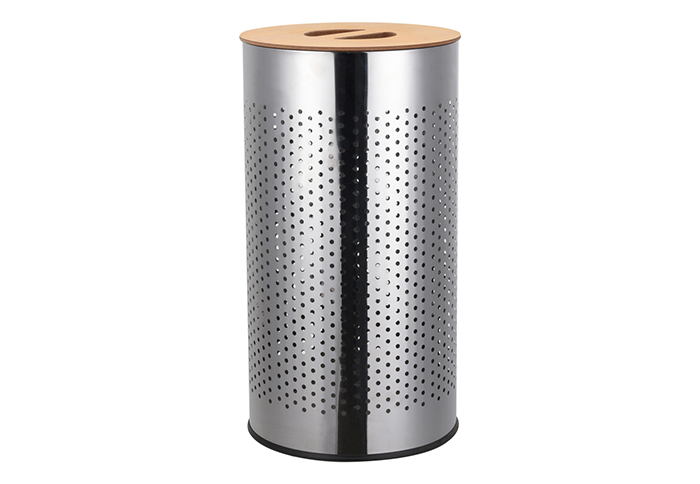What is a laundry bin?
In the grand tapestry of household essentials, the Laundry Bin stands as an unsung hero, quietly fulfilling the vital role of housing and organizing our worn garments. This comprehensive exploration seeks to unravel the essence of what a Laundry Bin truly is, dissect its myriad advantages, explore the diverse types available, scrutinize its applications in various settings, and conclude with a practical Laundry Bin Buying Guide to empower consumers in choosing the perfect repository for their clothes.
What is a Laundry Bin?
A laundry bin, also known as a hamper or clothes basket, is a receptacle designed for the temporary storage of dirty or worn clothing. Often characterized by its breathable construction, handles for easy transport, and a design that facilitates ventilation, the laundry bin plays a crucial role in maintaining order within living spaces while serving as a transitional station for clothing on its journey from being worn to being cleaned.

Advantages of Laundry Bins:
-
Organization and Tidiness: The primary advantage of a laundry bin lies in its ability to promote organization and tidiness within living spaces. By providing a designated space for dirty clothes, it prevents the accumulation of garments on floors or furniture.
-
Preservation of Clean Clothes: Laundry bins contribute to the preservation of clean clothes by keeping them separate from the worn or soiled ones. This not only maintains cleanliness but also prevents clean clothes from picking up odors or stains.
-
Facilitates Sorting and Laundry Routine: Laundry bins aid in sorting clothes based on their state clean or dirty facilitating a smoother laundry routine. When it's time to wash, the bin becomes a convenient vessel for transporting clothes to the laundry area.
-
Ventilation for Breathability: Many laundry bins are designed with breathable materials, allowing air circulation to prevent the development of odors and mildew. This feature is particularly beneficial for damp or sweaty clothes.
-
Portable and Convenient: Equipped with handles or lightweight materials, laundry bins are portable and convenient. Users can easily carry the bin to the laundry room or laundromat, streamlining the process of doing laundry.
Types of Laundry Bins:
-
Traditional Hamper: The traditional hamper features a sturdy design often made of materials like wood, wicker, or canvas. It typically has a lid to conceal the contents and is a decorative addition to bedrooms or bathrooms.
-
Pop-Up Laundry Basket: A pop-up laundry basket is a collapsible and lightweight option, usually made from flexible materials such as fabric or mesh. It is space-efficient and ideal for temporary storage.
-
Over-the-Door Laundry Hamper: Over-the-door laundry hampers are designed to hang on the back of a door, saving floor space. They often have compartments for separating different types of clothing.
-
Rolling Laundry Cart: A rolling laundry cart comes with wheels for easy mobility. This type is practical for larger households or those with laundry facilities in a different part of the home.
-
Collapsible Laundry Bag: Collapsible laundry bags are flexible and can be folded down when not in use. They are versatile and suitable for both homes and dormitories.
Applications of Laundry Bins:
-
Bedrooms and Closets: Laundry bins find a natural home in bedrooms and closets, where individuals can conveniently discard worn clothes. This prevents clothes from cluttering living spaces and encourages a neat and organized atmosphere.
-
Bathrooms: Placed in bathrooms, laundry bins offer a convenient solution for disposing of dirty clothes. Ventilated designs prevent moisture buildup, making them suitable for damp towels or clothes.
-
Laundry Rooms: In the laundry room, laundry bins serve as transitional storage before clothes are washed. They streamline the sorting process and make it easy to carry clothes to and from the washing machine.
-
Dormitories and Shared Spaces: Laundry bins are essential in dormitories or shared living spaces where multiple individuals share common laundry facilities. They provide a private and organized space for personal clothes.
-
Children's Rooms: Children's rooms benefit from the use of laundry bins to teach organizational habits from a young age. Kid-friendly designs make the process fun and encourage responsibility.
Laundry Bin Buying Guide:
-
Size and Capacity: Consider the size and capacity of the laundry bin based on the volume of dirty clothes generated. Larger households may require bins with greater capacity to accommodate a week's worth of laundry.
-
Material and Durability: Choose a laundry bin made from durable and washable materials. Common materials include canvas, mesh, plastic, or wicker. The material should withstand regular use and potential exposure to moisture.
-
Ventilation: Opt for a laundry bin with ventilation features to prevent odors and mildew. Mesh or perforated designs allow air circulation, ensuring that damp or sweaty clothes can breathe.
-
Handles for Portability: Handles or grips are essential for portability. Consider how easy it is to carry the bin when it's full of clothes. Handles
